Email marketing remains one of the most effective ways to nurture leads, engage your audience, and drive sales. But with inboxes becoming increasingly crowded, crafting campaigns that stand out and deliver results can be a challenge. Whether you’re a small business owner, entrepreneur, or part of a sales or marketing team, mastering the art of email marketing can give you a competitive edge.
Here, we’ll cover essential tips to optimize your email marketing efforts, tackle common challenges, and help you transform potential leads into loyal customers.
Why Email Marketing Still Matters
Despite the rise of social media and other digital channels, email marketing continues to deliver a high return on investment (ROI). For every $1 spent, email marketing generates an average ROI of $42. The key lies in building campaigns that are intentional, personalized, and aligned with your audience’s needs.
To make the most of your strategy, focus on creating emails that captivate your audience, provide value, and guide them through the buyer’s journey.
Below are tried-and-true email marketing tips to help you nurture leads and boost sales.
1. Segment Your Email List
Effective email marketing starts with segmentation. Instead of sending the same email to every subscriber, group your audience based on factors like demographics, purchase history, or website behavior. This allows you to deliver more personalized and relevant messages, which lead to higher open and conversion rates.
Why It Works
Segmentation ensures your subscribers receive messages that align with their interests, making them more likely to engage with your content.
Quick Example
- For new subscribers, send a welcome email introducing your brand.
- For returning customers, share product recommendations based on past purchases.
Pro Tip: Use your email marketing platform to track data and automatically categorize your audience into segments.
2. Craft Compelling Subject Lines
Your subject line is the first thing recipients see, and it can make or break your email’s open rate. Keep it short, engaging, and intriguing.
Best Practices for Subject Lines
- Use action verbs or create a sense of urgency.
- Personalize by including the recipient’s name.
- Test different styles, such as questions, humor, or emojis, to see what resonates with your audience.
Example: “Hi [Name], Your Exclusive Deal Ends Tonight! 💥”
Avoid subject lines that feel generic or overly promotional, as they can result in emails being ignored—or worse, marked as spam.
3. Optimize Email Design for Mobile Devices
With over 50% of emails now opened on mobile devices, ensuring your emails look great across all screen sizes is non-negotiable.
How to Optimize for Mobile
- Use responsive templates that adapt to different devices.
- Keep your copy concise and easy to scan.
- Ensure links and call-to-action (CTA) buttons are large enough to tap.
Pro Tip: Preview your emails on several devices before sending to catch any design issues.
4. Include Clear Calls-to-Action (CTAs)
Every email you send should have a clear goal, and your CTA should guide readers toward that desired action. Whether you want subscribers to visit your website, redeem an offer, or download a resource, your CTA needs to stand out.
Best Practices
- Use action-oriented language like “Shop Now,” “Learn More,” or “Get Your Discount.”
- Place the CTA button prominently and test different colors to see what drives the most clicks.
Example: “Don’t miss out! Click below to claim your 20% off.”
Avoid overloading your email with multiple CTAs that confuse readers. Stick to one or two max!
5. Automate Email Sequences
Time is precious, especially for small business owners and entrepreneurs. Automating your email campaigns helps you engage leads consistently without manually sending emails.
Examples of Automated Sequences
- Welcome Series: Greet new subscribers with a warm introduction and an overview of your products or services.
- Abandoned Cart Reminder: Encourage customers to complete their purchase by highlighting their abandoned items.
- Re-engagement Campaigns: Win back inactive subscribers with a special deal or offer.
Automated campaigns nurture your leads at every stage of the buyer’s journey while saving you time.
6. Personalize Content Based on Subscriber Behavior
Personalization goes beyond just including the recipient’s name. Use the data you’ve collected to tailor your content to their interests, behavior, or previous interactions with your brand.
Ideas for Personalization
- Recommend products based on past purchases.
- Send relevant blog articles based on their browsing behavior.
- Use location data to promote local events or offers.
Pro Tip: Personalized emails deliver 6x higher transaction rates than non-personalized emails.
7. Offer Value and Exclusive Deals
Your subscribers want to feel that being on your email list is worth their time. Provide value through educational content, helpful tips, or exclusive offers.
Ideas for Valuable Content
- Share how-to guides, tutorials, or industry insights.
- Offer early access to sales or new product launches.
- Provide discounts that are only available to subscribers.
Example: “Subscribers Only! Get 25% Off Your Next Purchase.”
Consistently delivering value strengthens your relationship with subscribers and increases their loyalty to your brand.
8. Track, Analyze, and Optimize
For long-term success in email marketing, you need to track your campaigns’ performance. Use analytics to measure key metrics such as:
- Open rates
- Click-through rates (CTR)
- Conversion rates
- Unsubscribe rates
Pay attention to what’s working and iterate on it while addressing areas for improvement. For example, if your open rates are low, experiment with different subject lines or sending times.
Pro Tip: Tools like Mailchimp, HubSpot, or ActiveCampaign make it easy to monitor your email marketing performance.
9. A/B Test Email Elements
Small tweaks, like changing your CTA color or rephrasing an email header, can result in significant performance improvements. A/B testing allows you to determine which variations work best for your audience.
Elements to A/B Test
- Subject lines
- Email design and format
- CTA text and button design
- Sending times
Test one element at a time to ensure clear results.
10. Comply With Email Marketing Regulations
No matter how creative your emails are, failing to comply with regulations like GDPR or CAN-SPAM can seriously hurt your efforts. Ensure your email practices follow legal guidelines:
- Include an unsubscribe link in every email.
- Only email individuals who have opted in.
- Clearly identify your business in the email footer.
Building trust with your audience is just as important as crafting compelling campaigns.
Overcoming Common Email Marketing Challenges
Here’s a quick overview of how these tips address common challenges:
- Low open rates: Create engaging, personalized subject lines.
- Poor conversion rates: Use clear CTAs and provide valuable content.
- Deliverability issues: Adhere to email marketing regulations.
- Unengaged subscribers: Segment lists and personalize content.
- Difficulty tracking results: Use analytics tools to measure and refine performance.
By addressing these challenges head-on, you can position your campaigns for success.
The Path to Better Email Marketing
Email marketing is both an art and a science. By implementing these tips, you can build meaningful connections with leads, nurture them effectively, and drive consistent sales.
If you’re ready to elevate your email marketing game, remember to segment your lists, stay data-driven, and always focus on delivering value to your audience.
We Want To Talk To You About Your Marketing Goals.
Let’s Supercharge Your Online Growth!












